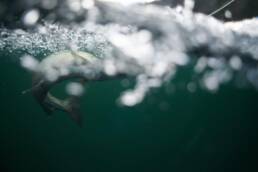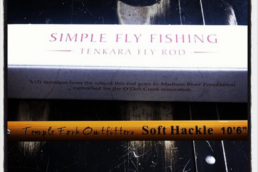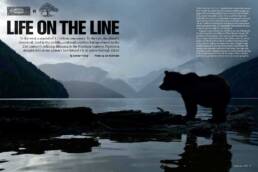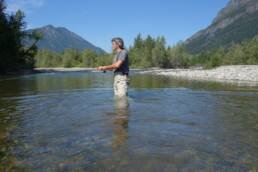The baseline of the Kootenay freshwater life cycle is populated by millions of one particularly beautiful yet hardy fish: the trout.
Close relative to both salmon and char, trout is the common name for nearly 50 different species of freshwater fish that belong to the genera Oncorhynchus, Salmo and Salvelinus, part of the sub family of Salmoniae, which in turn is part of the family Salmonidae. The Kootenays represents one of North America’s strongholds when it comes to trout populations.
From the diminutive, once-omnipresent Kokanee to the almighty Gerrard — the largest species of rainbow trout in the world — here’s a factual look at the dominant species that make Kootenay waters so lively.

Kokanee (Oncorhynchus nerka)
Adult range in length: 20 to 25 centimetres, maximum 60 centimetres
Adult range in weight: 0.1 to 0.2 kilograms, maximum 4.5 kilograms
Kokanee feed almost exclusively on zooplankton, tiny aquatic animals ranging in size from a pinprick to that of a small fish hook. They are land-locked Sockeye salmon, and while they get their name from Kokanee Glacier, natural populations are found from California to Alaska and in northeast Asia. After they spend three to five years avoiding death by every other fish species in their shared waterworld—large rainbow and bull trout like to eat at least two adult-sized Kokanee every day—as well as evading eagles, osprey and land mammals like minx, Kokanee spawn in tributary streams or along the lakeshore. The number of eggs deposited by a single female depends on her size, but numbers from about 370 to 1,800 have been reported. After they spawn, they die.

Rainbow Trout (Oncorhynchus mykiss)
Adult range in length: 30 to 75 centimetres, maximum 90 centimetres
Adult range in weight: 1 to 7 kilograms, maximum 9 kilograms
Rainbow trout mainly eat leeches, crustaceans, mollusks and insects. The larger rainbows, like the Gerrard, are piscivorous, meaning they eat fish as their main source of food. Rainbow trout usually spawn for the first time in their third or fourth year. In the larger piscivorous fish, maturity is delayed. If food and conditions are healthy, most mature individuals spawn every year, with most rainbows living between six to nine years. The largest rainbow trout ever caught in British Columbia weighed almost 24 kilograms and came from Jewel Lake, near Grand Forks.

Bull Trout (Salvelinus confluentus)
Adult range in length: 50 to 75 centimetres, maximum 100 centimetres
Adult range in weight: 2 to 9 kilograms, maximum 15 kilograms
Bull trout are endemic to Western Canada and the US Pacific Northwest. Often confused with the Dolly Varden, a type of char found in British Columbia’s coast and far north, bull trout, also a char, represent another significant player in the Kootenay trout milieu. Young bull trout feed on zooplankton, zoobenthos and chironomids. As they grow larger, they begin to feed heavily upon other fish. They can either be migratory or live their entire lives in the same body of water. Bull trout reach sexual maturity at between four and seven years of age and are known to live as long as 12 years. The largest recorded bull trout captured, from Lake Pend Oreille, Idaho, was 100 centimetres long and weighed 15 kilograms.
Mitchell Scott
Mitchell Scott is the longtime Editor-in-Chief and co-publisher of both Kootenay Mountain Culture and Coast Mountain Culture Magazines. He's been in the writing/publishing/media business for over 20 years and currently lives in Nelson, BC, where he tries to keep up with his two teenage sons with aching futility.
Related Stories
Life On the ‘Squatch Watch
For millennia, Bigfoot has evaded capture and definitive conclusion. Despite myriad monster hunters, top-secret DNA…
Simple Fly Fishing
VENTURA, Calif. (March 31, 2014) — Patagonia, Inc., the outdoor apparel company, today launched its Simple Fly Fishing…
CMC Feature Series – Life On The Line
To the west, a market of 1.5 billion consumers. To the east, the planet’s dirtiest oil. And in the middle, a colossal…
Review: Redington SonicDry Pant
When you need dry, light and durable in the river When it’s too cold to wet wade, yet too warm for the full protection…
Have You Met The Koots Creatures Yet?
Whimsical creatures are popping up all around the Kootenay region that they're named for. This is why. Story by Louis…
Water Gallery
Check out this unreal spread for our Summer Gallery. Both shots are from the one and only, Ryan Creary.








